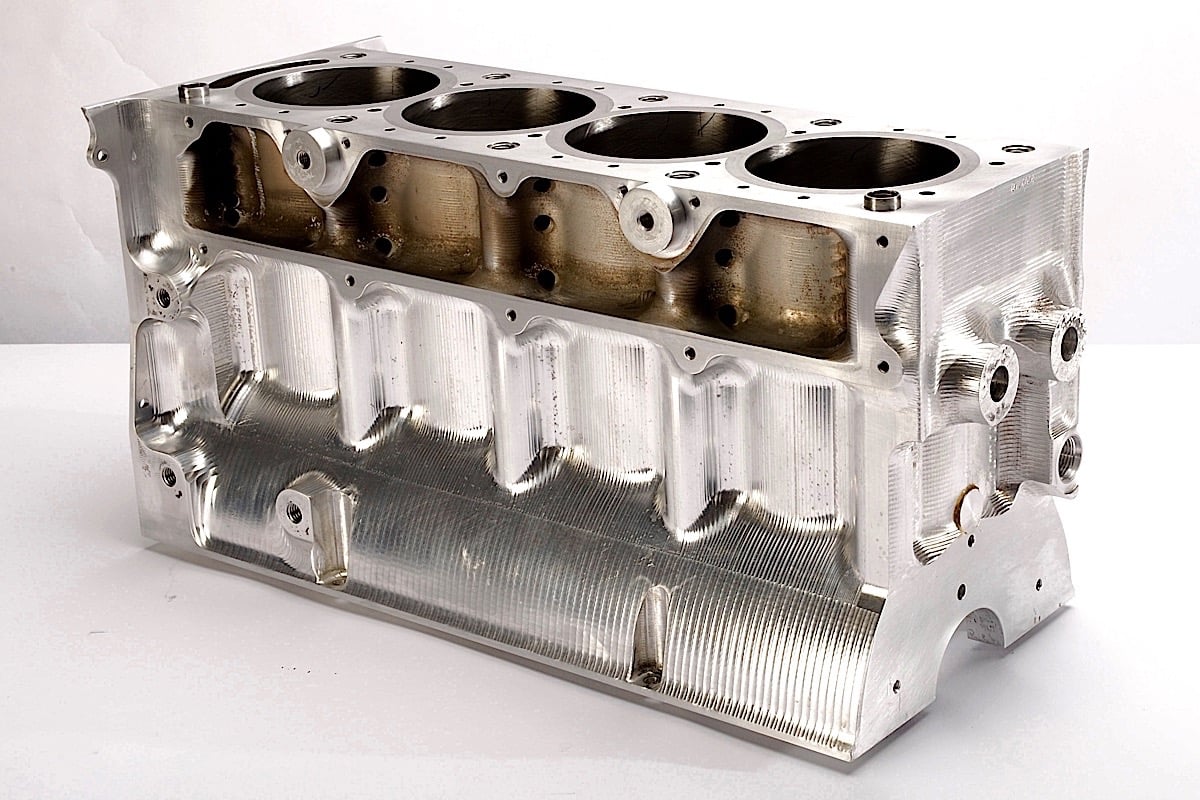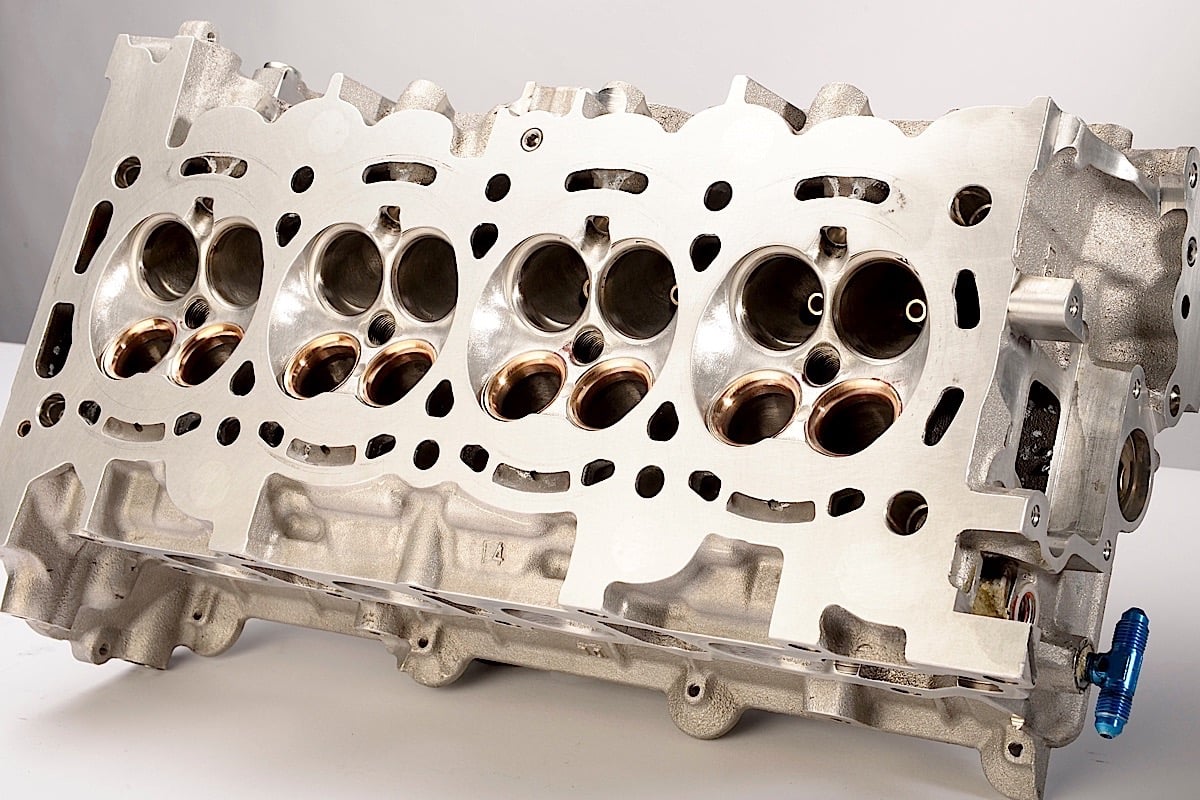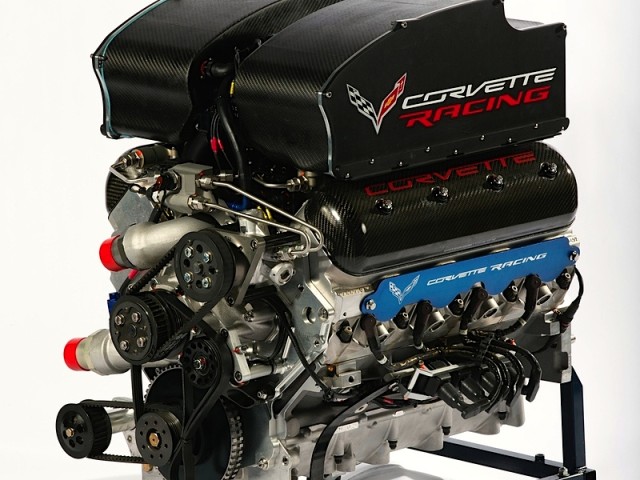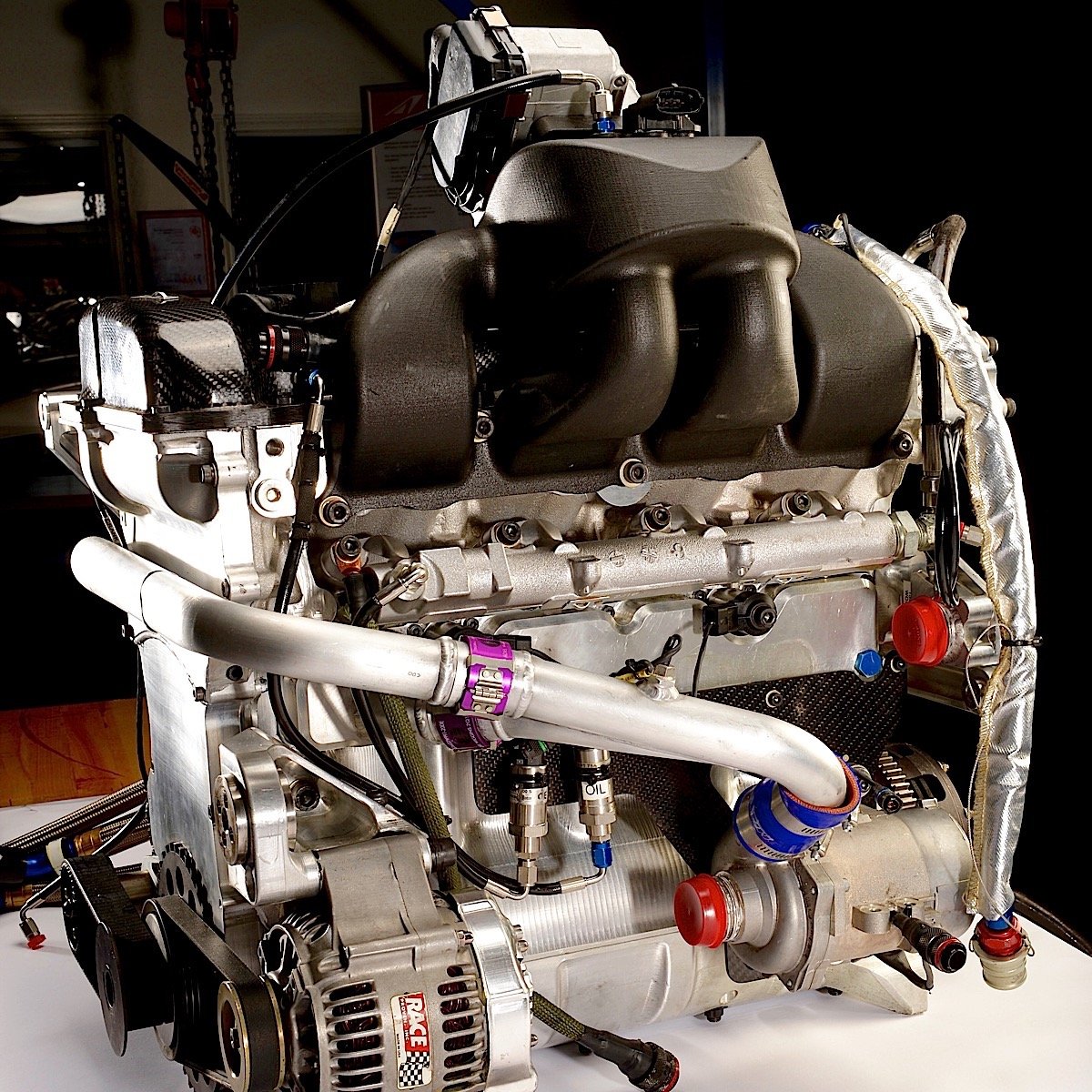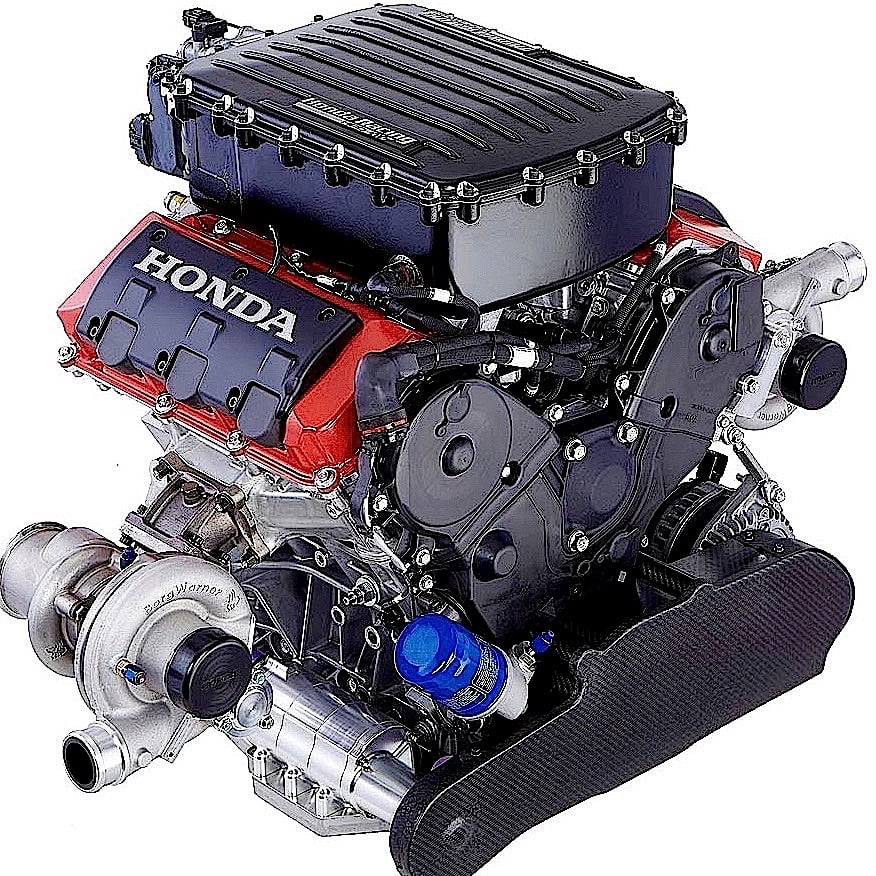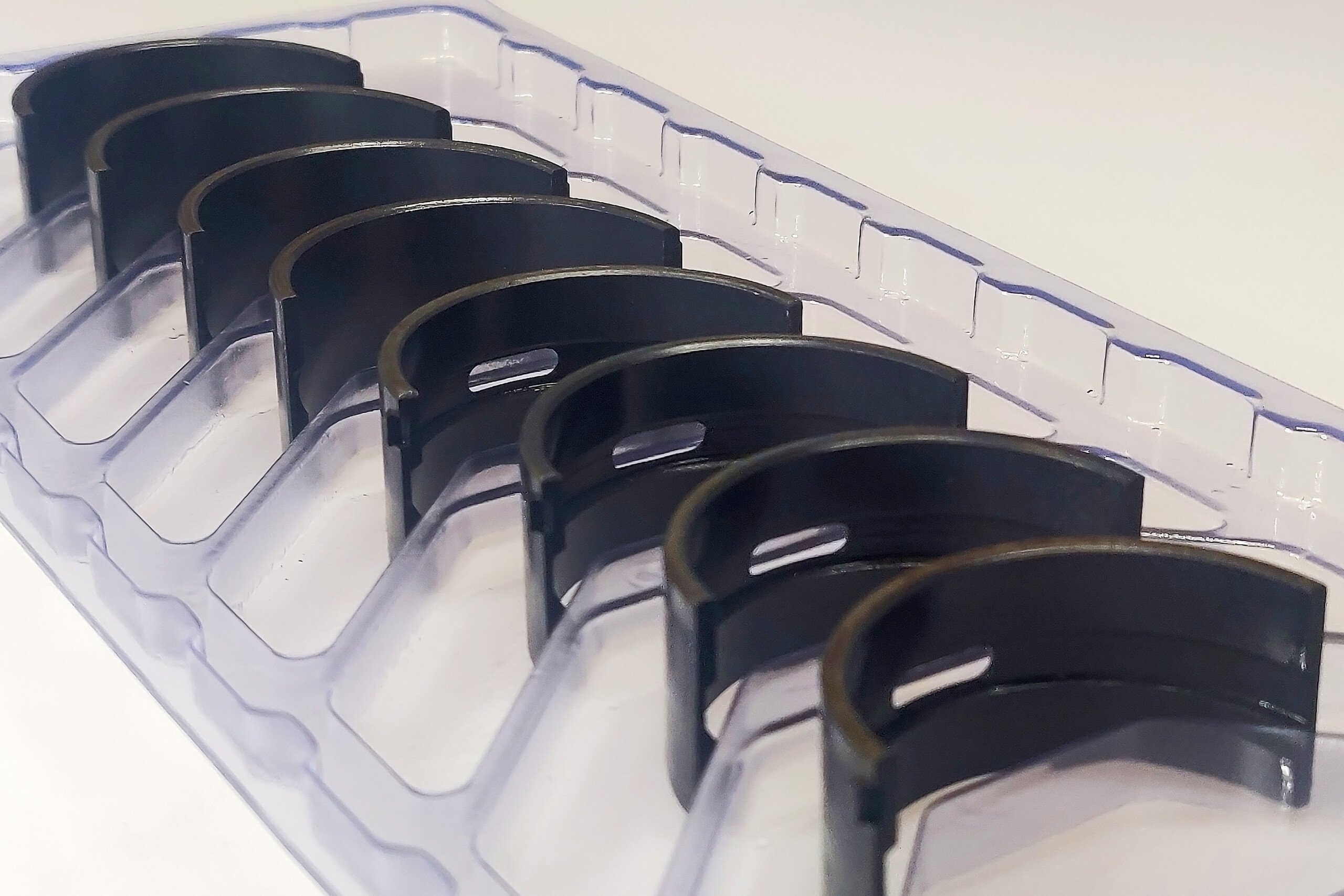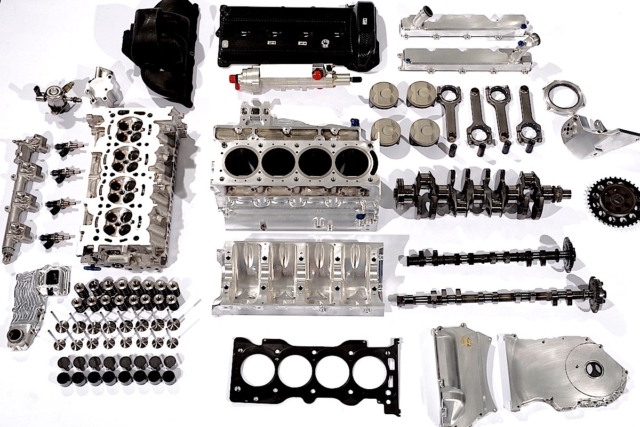
Components of the 2.0-liter turbocharged 4-cylinder found in the DeltaWing prototype race car that led in the early laps of the Rolex 24 Hours at Daytona.
Following one of the most entertaining and exciting Rolex 24 Hours of Daytona races in recent memory, faithful EngineLabs readers enjoyed additional insight into many of the popular cars, including the two Corvettes that were separated by less than a car length at the finish line to wind up seventh and eighth overall and 1-2 in the GTLM class. In case you missed previous stories on the some of the engines used in this classic endurance race, here are a few recaps. And we’ve got a fresh look at the engine in the wicked-looking DeltaWing that dominated early in the event until a crash.
The DeltaWing engine is based around a Mazda MZR cylinder head but Elan Power Products had to machine the cylinder block out of billet aluminum to fit the chassis.
The 5.5-liter V8 engines in the Corvettes were covered in depth in this deep-dive tech article. Class rules and homologation procedures have kept the LS platform in the C7.R Vettes, although work on a LT engine continues. The competition engine is based on an LS7 block but uses race-specific heads with only a few similarities to the LS7. The unique heads include direct injection and sport valve angles of approximately 12 degrees. The 4.090 bore allows 2.125 intake valves and 1.600 exhaust. Air restrictors keep the revs down around 6,500 rpm.
We also looked at the new Mazda MZ-2.0T gas engine that replaced the SkyActiv-D diesel engine in the prototype class. We still don’t have a photo of the new 4-banger, but it’s similar to the MZR-R engine developed by AER 10 years ago for sportscar racing. One of the Mazda prototypes was the first car to drop out of the race after only 11 laps due to a flywheel failure, but the other Mazda factory car assumed the lead three times before retiring due to a valvetrain issue and fire after 327 laps.
There was considerable fanfare for the new Ford GT race cars, especially since they were running against the Corvettes in the highly competitive GTLM class. We looked at the 3.5-liter EcoBoost engines built by RoushYates in this story where the twin turbo V6s were being tested in the Daytona Prototype class before moving to to the GT. One of the EcoBoost DP cars finished fifth overall but the GTs could do no better than seventh and ninth in their class and 31st and 40th overall.
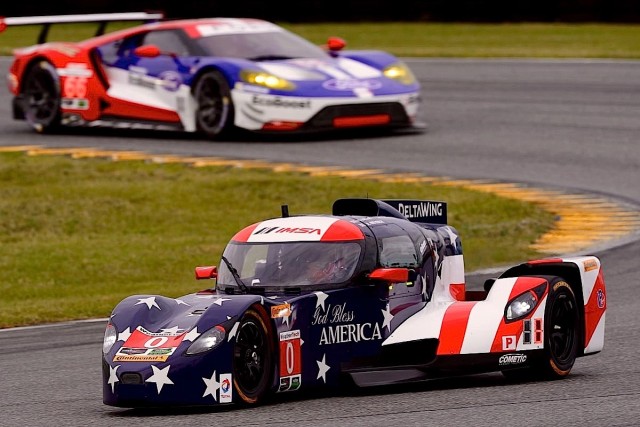
The radical DeltaWing practicing at Daytona before the Rolex 24. That’s the new Ford GT in the background.
Now we come to the DeltaWing. With Katherine Legge behind the wheel, the jet-fighter-looking DeltaWing led numerous laps before co-driver Andy Meyrick hit a stalled car on lap 119. Here’s what we could find out about the engine that made the slippery DeltaWing a contender in the early going.
A 2.0-liter turbocharged 4-cylinder, it was developed by Elan Power Products around a Mazda MZR cylinder head. Elan had to design a compact, all-billet cylinder block to fit into the chassis. The tight fit is also evident by the custom 3D-printed intake manifold. The engine is designed to deliver less than 300 lb-ft of torque because of gearbox limitations, so there is a very sophisticated control on the turbocharger to govern boost from the Borg-Warner turbo. But the DeltaWing is about half the weight of other cars in the prototype class, so it can lead the pack with just a 2.0-liter engine that is restricted to 13.8 pounds of boost in the intake manifold.
By the way, the winner of the race was the EMS Ligier JS P2 powered by the HR35TT V6 engine that we’ve seen briefly in this story: Honda Builds 3.5-liter Twin-turbo V6 For Daytona Prototype Cars and also modified for off-road racing as seen here: Honda Shows Ridgeline Baja Racer But Not Much Of Engine.
The 3.5-liter twin-turbo V6 is developed for competition by Honda Performance Development and is based on the J35 production engine. Key production-based components include the block and cylinder heads, direct-injection fuel system, valve train components, drive-by-wire throttle, alternator, sensors and fasteners. The engine even utilizes a stock Honda oil filter. It was the first overall victory for Honda at Daytona.
The DeltaWing turbocharged 4-cylinder compared to the Honda HT35TT, which is a big brother to the HR35TT that won the race.



